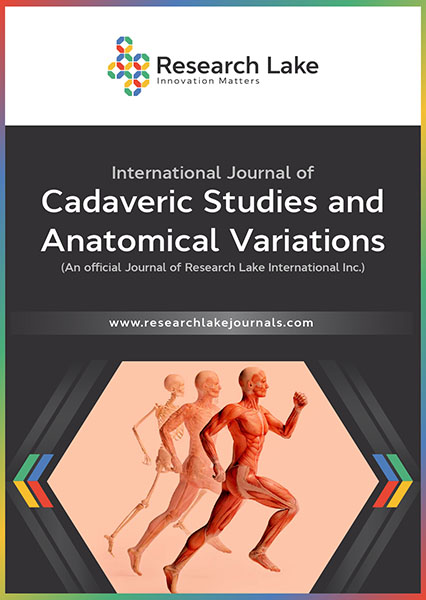Palmaris Longus Inversus Muscle Present Bilaterally in an 82 Year-old White Female Cadaver and Unilaterally in a 68 Year-old White Female Cadaver
Abstract
The palmaris longus muscle is one of the most variable muscles in the human body. Palmaris longus muscle anatomical variations include reversed (palmaris longus inversus muscle), duplicated, triplicated, bifid, hypertrophied, accessory (additional) slips, and/or complete absence. During anatomical dissection of fifty cadavers in the 2019 undergraduate first-year anatomy course at the Uniformed Services University of the Health Sciences, we found a palmaris longus inversus muscle bilaterally on an 82 year-old White female cadaver and a unilateral palmaris longus inversus muscle on the right forearm of a 68 year-old White female cadaver. Due to the prevalence of anatomical variations in the palmaris longus muscle, adequate knowledge of such prevalence and clinical significance is needed in multiple medical specialties for its reconstructive use, and the possibility and treatment of clinical syndromes. An accessory (additional) palmaris longus muscle, hypertrophied palmaris longus muscle, hypertrophied palmaris longus inversus muscle, or just the presence of a palmaris longus inversus muscle, can all cause compression to adjacent neurovascular structures, such as the median nerve, ulnar nerve, ulnar artery, and/or the anterior interosseous artery, in the distal forearm and wrist. Palmaris longus tendons are used as grafts in various surgeries, such as extensor tendon repair in rheumatoid arthritis patients, injuries of flexor tendons and repair, lip augmentation, reconstructive hand surgery, frontalis suspension sling in ptosis correction, plastic surgery, and pulley reconstructions. Surgeons, physicians, radiologists, and physiotherapists must be knowledgeable of the many PLM anatomical variations and their possible contributions to pathological processes.
Copyright (c) 2021 Guinevere Granite, Gary Wind, Ximena Leighton

This work is licensed under a Creative Commons Attribution-NonCommercial 4.0 International License.
Copyright © by the authors; licensee Research Lake International Inc., Canada. This article is an open access article distributed under the terms and conditions of the Creative Commons Attribution Non-Commercial License (CC BY-NC) (http://creativecommons.org/licenses/by-nc/4.0/).















